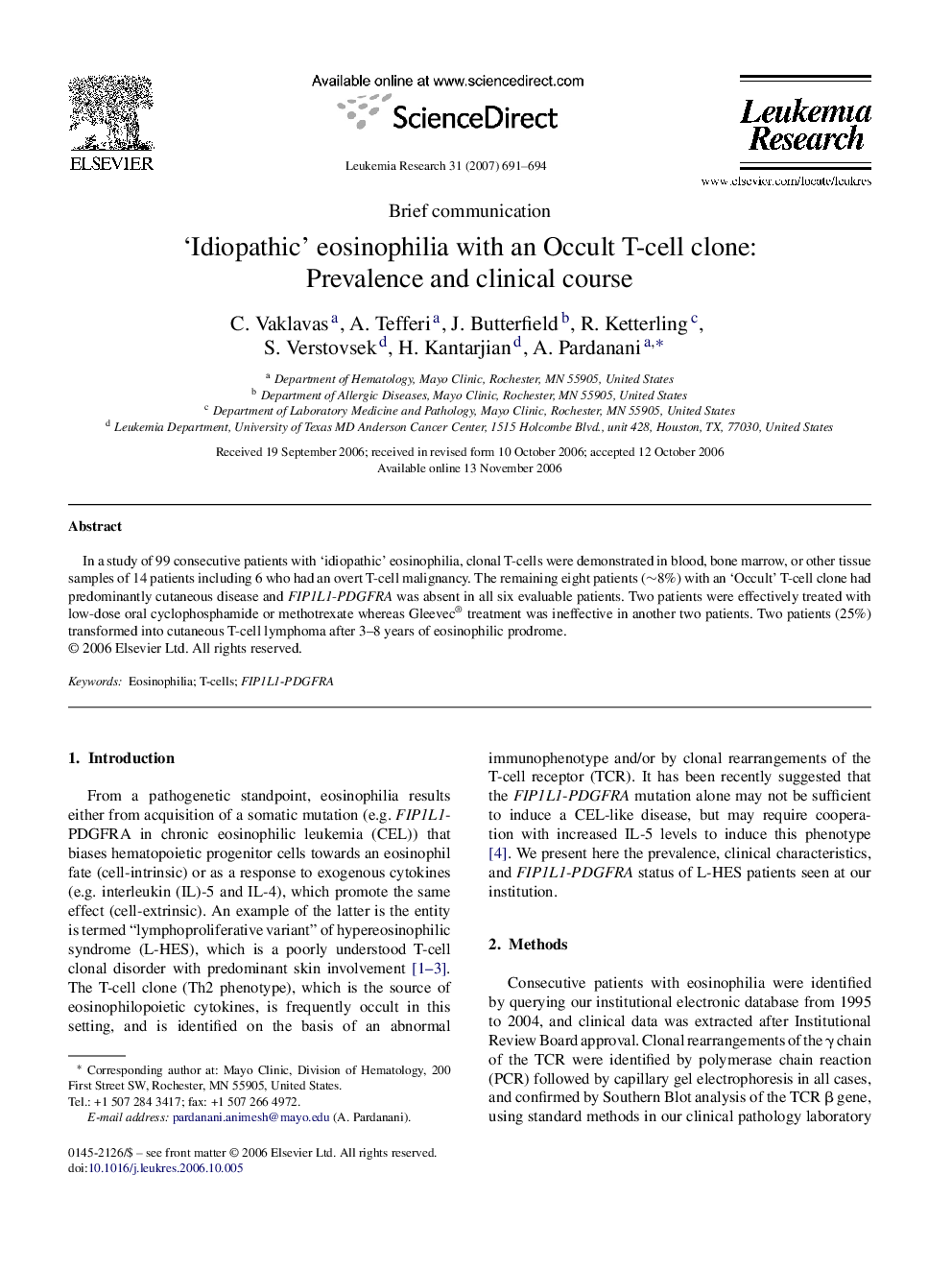| Article ID | Journal | Published Year | Pages | File Type |
|---|---|---|---|---|
| 2138317 | Leukemia Research | 2007 | 4 Pages |
Abstract
In a study of 99 consecutive patients with ‘idiopathic’ eosinophilia, clonal T-cells were demonstrated in blood, bone marrow, or other tissue samples of 14 patients including 6 who had an overt T-cell malignancy. The remaining eight patients (∼8%) with an ‘Occult’ T-cell clone had predominantly cutaneous disease and FIP1L1-PDGFRA was absent in all six evaluable patients. Two patients were effectively treated with low-dose oral cyclophosphamide or methotrexate whereas Gleevec® treatment was ineffective in another two patients. Two patients (25%) transformed into cutaneous T-cell lymphoma after 3–8 years of eosinophilic prodrome.
Keywords
Related Topics
Life Sciences
Biochemistry, Genetics and Molecular Biology
Cancer Research
Authors
C. Vaklavas, A. Tefferi, J. Butterfield, R. Ketterling, S. Verstovsek, H. Kantarjian, A. Pardanani,
